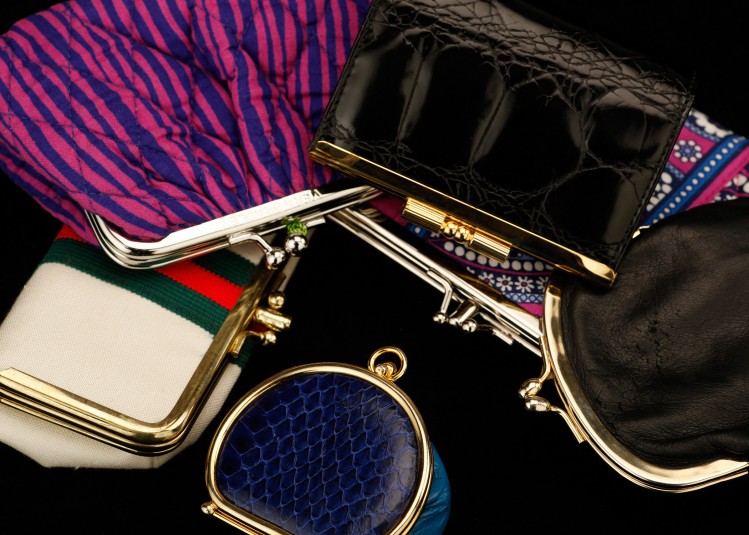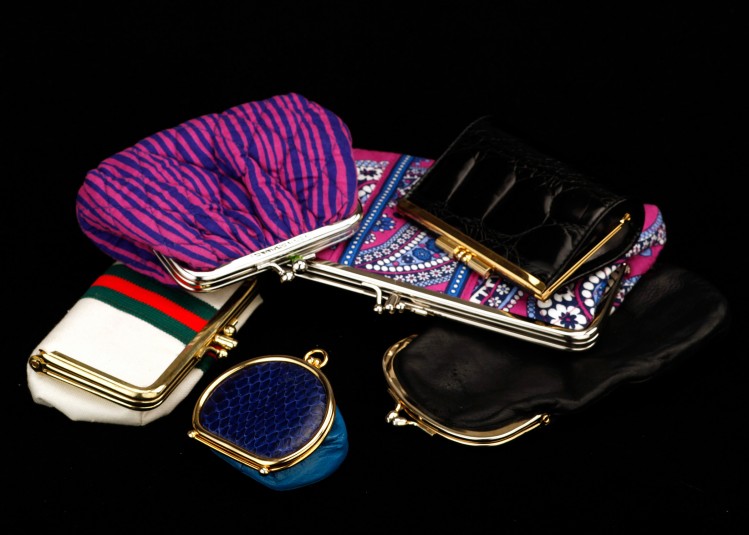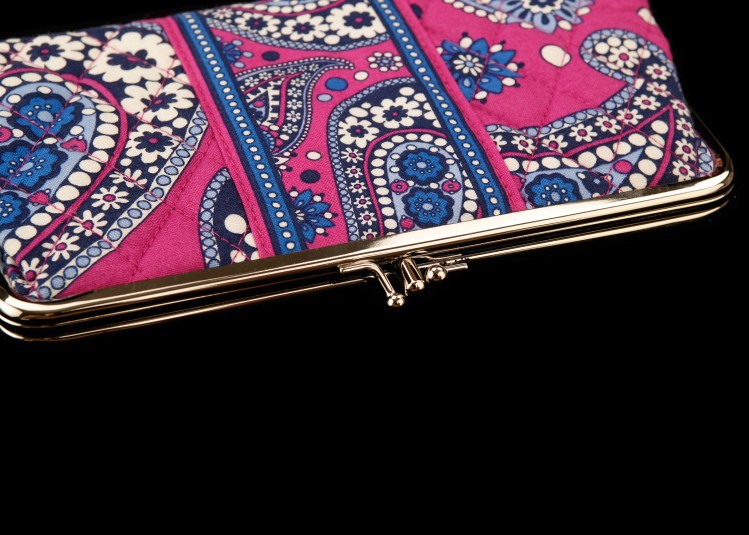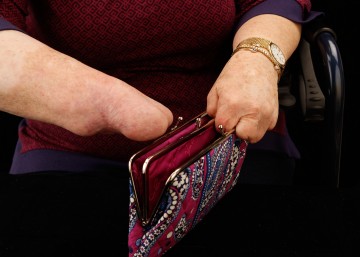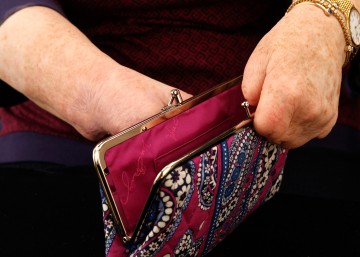Clasps
Instead of using purses with zip closures, snaps, or buckles, Cindy has selected small purses that have a metal frame and a sliding clasp closing mechanism, called a ‘kissing lock’ or a ‘kiss clasp.’
Description
Like Cindy’s scissors and washcloth, some items in her daily environment have been chosen for their “accidentally adaptive” features. Purse clasps are an example. Instead of using zip closures, snaps, or buckles, Cindy has selected small purses that have a metal frame and a sliding clasp closing mechanism, called a “kissing lock” or a “kiss clasp.” Cindy told us: “I had a couple of these purses already. When you struggle with zippers long enough, you think, ‘What would be better? Why aren’t there bags that don’t use zippers? And then you realize, ‘oooh, there are bags like that!’” She had one—a shiny gold clutch purse with that older-style clasp that she had never used but had long owned. It’s been her wallet for the past few years and now is all worn out.
Kiss-clasp purses were popular in the nineteenth and early to mid twentieth centuries, but are less so today. “Why can’t we have new versions of these now? I hate that they are considered ‘old-lady purses.’ Why have they become frumpy?” (Cindy asks the same question about frumpiness regarding pants with elastic waistbands, which she now wears.)
This example of hidden accessibility has made us curious about where other sources of ergonomically friendly mechanics might be found in the history of fashion. Styles come and go; but might it be possible to mine through archives of past trends for closures, ties, and connectors that don’t require precise hand skills? We’re also watching new/old ideas like MagZip, Zubits, and Magnificent Baby—designs that question the inherited operations of clothing and pose new possibilities.
